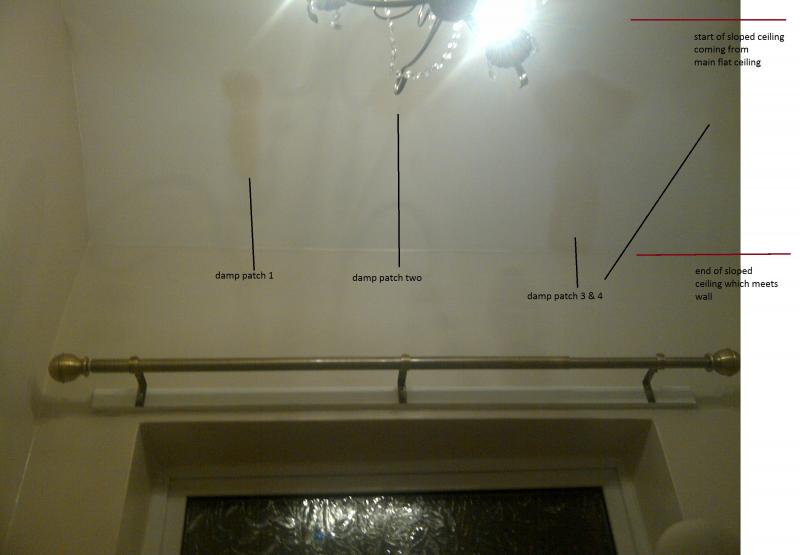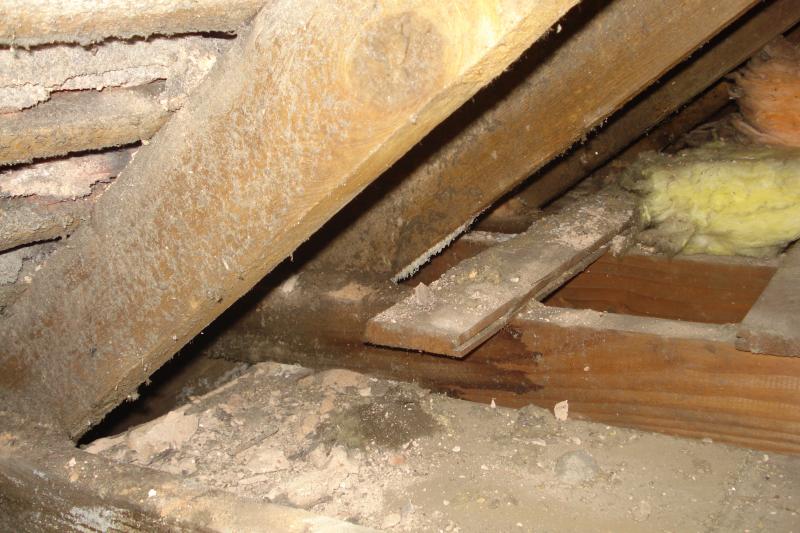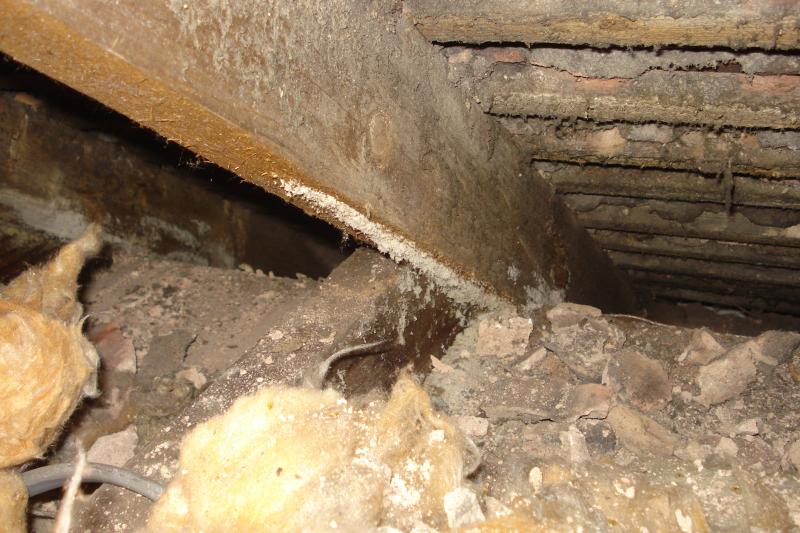Hi all,
Please advise/help if you can:
I have a damp problem on the sloped parts of my ceiling.
Can anybody provide advice on the cause and best way to solve?
The roof tiles are not backed with any felt or anything else so its just tiles in the loft so maybe water is getting through.
The roof does extend further down past the ceiling level, what the best way to solve is?
Will lining the inside of the roof with a waterproof membrane/underlay attached to the underside of the beams/struts which at the roof end runs outside to the guttering do the job, or will it cause lack of ventilation?
i have attached a photo of the damo marks on the sloped/angled part of the ceiling and have attempted to label!.
there are no damp signs on the flat part of the ceiling, however this may be solved with the loft insulation soaking it up.
any help greatly recieved!
thankyou
Please advise/help if you can:
I have a damp problem on the sloped parts of my ceiling.
Can anybody provide advice on the cause and best way to solve?
The roof tiles are not backed with any felt or anything else so its just tiles in the loft so maybe water is getting through.
The roof does extend further down past the ceiling level, what the best way to solve is?
Will lining the inside of the roof with a waterproof membrane/underlay attached to the underside of the beams/struts which at the roof end runs outside to the guttering do the job, or will it cause lack of ventilation?
i have attached a photo of the damo marks on the sloped/angled part of the ceiling and have attempted to label!.
there are no damp signs on the flat part of the ceiling, however this may be solved with the loft insulation soaking it up.
any help greatly recieved!
thankyou




